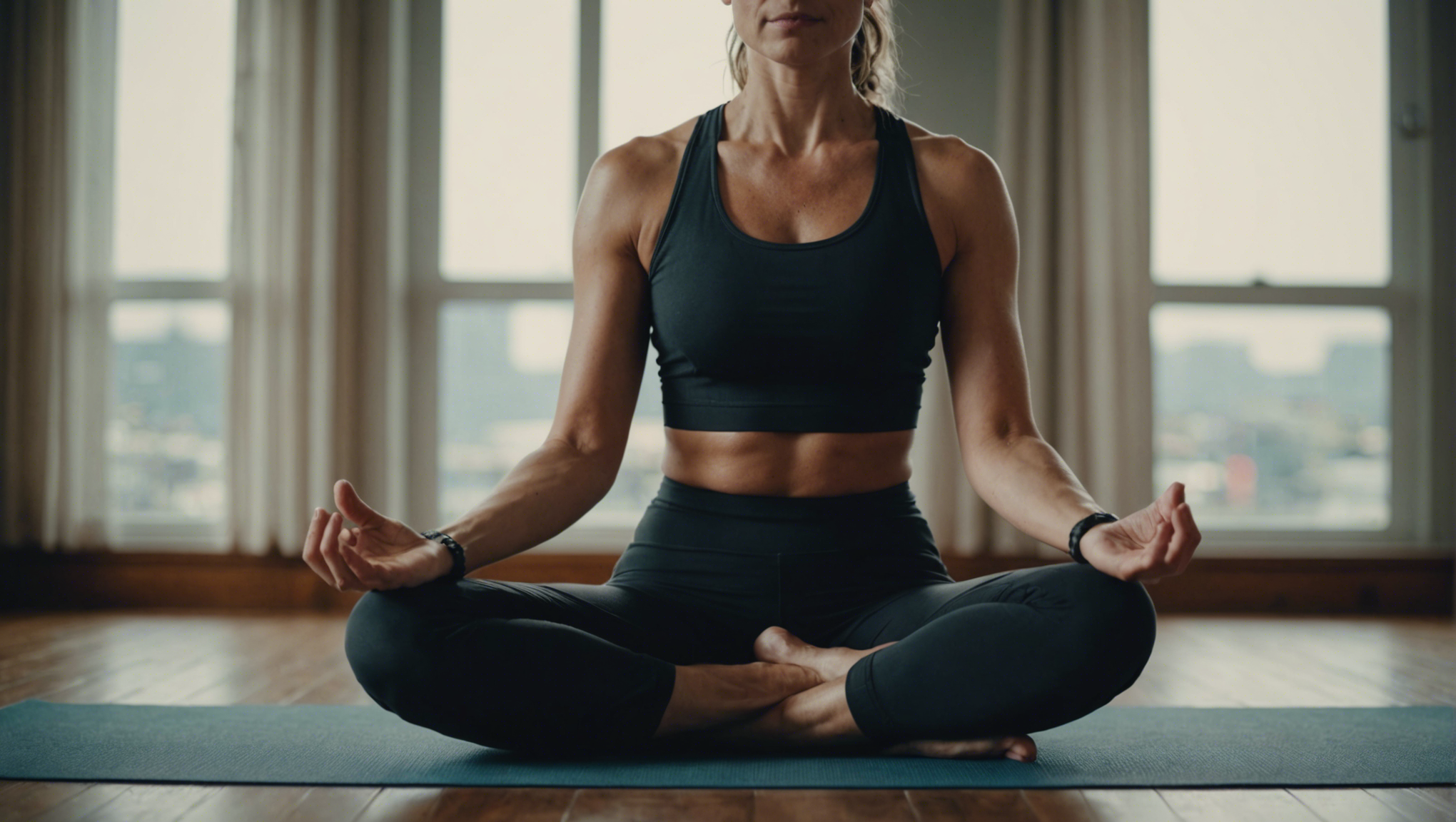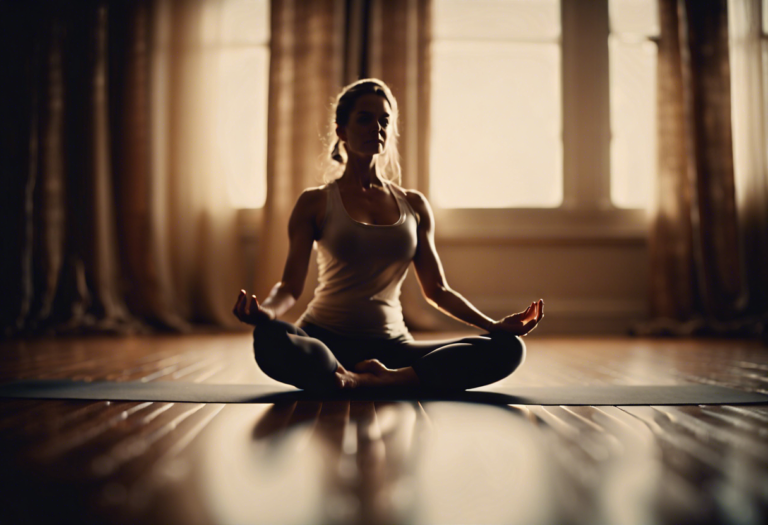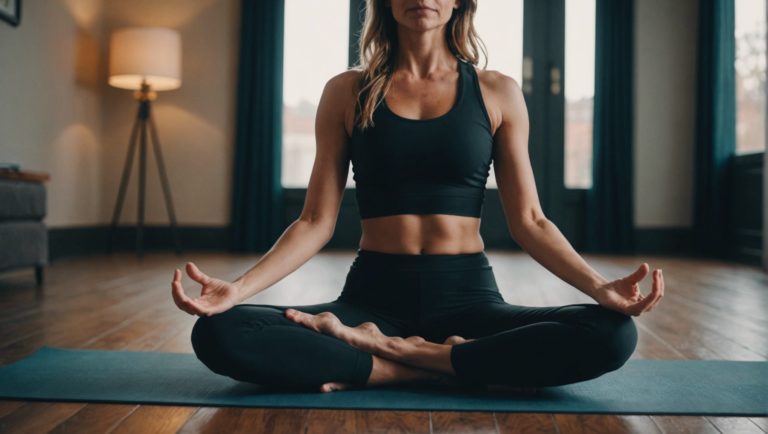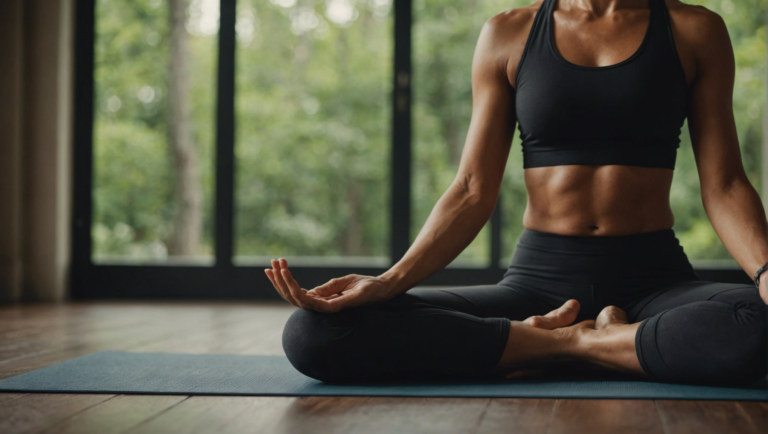Discover The Authenticity Of Yoga: Go Legit With Your Practice
Discover the Authenticity of Yoga: Go Legit with Your Practice
Embracing True Yoga Practices: A Guide to Genuine Well-Being
In an age where digital platforms overflow with a myriad of yoga practices, each promising unparalleled benefits, the quest for authenticity in yoga has never been more critical. True yoga extends far beyond the physical postures known as asanas; it’s a holistic journey encompassing mental, physical, and spiritual well-being. This article dives deep into how you can ensure your yoga practice remains genuine, rooted in tradition, and beneficial not just for the body, but for the mind and spirit as well.
The Essence of Authentic Yoga
Authenticity in yoga is derived from its ancient scriptures and teachings, which offer a comprehensive lifestyle rather than a mere series of exercises. Understanding the philosophies behind yoga, including the eight limbs of Ashtanga Yoga outlined by Patanjali, elevates a routine practice into a transformative experience. It’s crucial to learn about the yamas (moral codes), niyamas (self-discipline), and dhyana (meditation) to fully grasp the depth of yoga. Engaging with texts such as the Yoga Sutras or Bhagavad Gita can provide invaluable insights into your practice.
Selecting the Right Yoga Practice for You
With numerous styles of yoga available, selecting one that resonates with your personal goals and values is essential for maintaining authenticity. Whether it’s the physicality of Vinyasa, the precision of Iyengar, the spiritual journey of Kundalini, or the cleansing routines of Kriya yoga, delve into the origins and methodologies of each before making a choice. Remember, the best yoga practice for you is one that nurtures not only your physical health but also your inner well-being and spiritual growth.
The Role of a Genuine Yoga Teacher
A teacher plays a pivotal role in guiding you through the authentic pathways of yoga. Qualified instructors who not only teach but also live the yogic principles can significantly enhance your understanding and practice. They are the conduits to the ancient wisdom of yoga, applying it in a manner that’s relevant to modern lifestyles. Verifying a teacher’s credentials, their lineage, and their approach to teaching can help you find a mentor who embodies the essence of true yoga practice.
Integrating Tradition with Personal Growth
While reverence for yoga’s traditions is crucial, integrating its practices into the fabric of your contemporary life is equally important. Authentic yoga is adaptable; it encourages personal interpretation and growth. Make your practice your own by setting intentions that align with your personal values and lifestyle. This personal connection reinforces the legitimacy of your practice, ensuring it remains a genuine source of joy and transformation.
A Continuous Journey of Discovery
Yoga is not a static practice but a lifelong journey of learning and discovery. The more you immerse yourself in its teachings, the more layers unfold. Workshops, retreats, and further education can deepen your understanding and commitment. However, the most profound insights often come from simply being present in your practice, listening to your body, and observing your mind. This attentiveness fosters a truly authentic experience, imbued with personal significance and spiritual depth.
The authenticity of your yoga practice is not determined by the complexity of the asanas you can master, nor by the number of hours you spend on the mat. It’s illuminated by the intention behind your practice, the depth of your understanding, and the extent to which yoga harmonizes with every aspect of your life. In embracing the authentic essence of yoga, you embark on a genuine path to well-being, discovering its vast potentials not as a temporary pursuit but as a lifetime journey of growth and enlightenment.
The Historical Roots of Yoga and Its Evolution Over Centuries
Yoga, a practice as ancient as the lands from which it originated, stands today not merely as a form of exercise but as a testament to a rich tradition that has evolved through centuries. This transformative journey from its nascent stages in the Indus-Sarasvati civilization to the modern-day studios around the globe provides a fascinating glimpse into the interplay between spiritual pursuit and physical well-being.
Unearthing the Spiritual Foundations
Yoga’s roots can be traced back over 5,000 years in Northern India, where it was developed as a means to achieve spiritual enlightenment. Initially mentioned in the Rigveda, the oldest of the sacred texts in Hinduism, yoga was more of a meditative practice than the physical activity it is widely recognized as today. These ancient texts, including the Upanishads, outline yoga as a spiritual discipline, a journey towards the realization of the unity between the self (Atman) and the cosmic (Brahman).
The Classical Era of Yoga Philosophy
The subsequent period witnessed the compilation of the Yoga Sutras by Sage Patanjali, around the 2nd century BCE, which is often cited as a pivotal moment in yoga’s history. The Yoga Sutras established a framework for practicing yoga that went beyond its previous incarnations. Patanjali’s work laid out the eight limbs of yoga (Ashtanga Yoga), which provided a structured approach to achieving samadhi, or enlightenment. This era marked a transition where yoga started integrating more physical aspects alongside its deep spiritual practices.
The Bhakti Movement and the Diversification of Yoga
Moving forward to the medieval era, the Bhakti movement played a crucial role in the evolution of yoga. This period was characterized by a surge in devotional practices, emphasizing love and devotion towards a personal god. Yoga adapted to these changes, incorporating more accessible forms of worship and meditation. It was during this time that yoga started becoming more intertwined with daily life, promoting a practice that was not only reserved for the ascetics but also for the common man.
The Modernization and Westernization of Yoga
The 19th and 20th centuries marked a significant transition in the practice of yoga, with its introduction to the Western world. Pioneers like Swami Vivekananda played a crucial role in popularizing yoga in the West, presenting it as a philosophical system and a scientific practice. The physical aspect of yoga, particularly asana (postures), gained prominence, evolving into what is widely known today as modern yoga.
The Global Yoga Renaissance
Today, yoga is a global phenomenon, cherished for its ability to harmonize the body, mind, and spirit. Its adaptability has allowed for a vast array of styles and practices, from the vigorous sequences of Vinyasa to the restorative poses of Yin Yoga. However, this diversification has also prompted discussions about authenticity and the commercialization of yoga. Despite these debates, yoga’s enduring essence remains a quest for inner harmony and self-discovery.
Embracing the Essence and Authenticity
As yoga continues to evolve, integrating ancient wisdom with contemporary needs, it prompts an exploration of its authentic roots. Practitioners are encouraged to delve deeper into the philosophy and spirituality that underpins yoga, transcending beyond the physical practice. The essence of yoga, after all, is a journey towards the realization of one’s true self, a path that has meandered through centuries but remains intrinsically unchanged.
Yoga, with its rich historical tapestry, continues to be a beacon of tranquility and inner strength in a tumultuous world. Its evolution, from the ancient vedic chants to the modern mats rolled out in countless studios across the globe, tells a story of adaptation, resilience, and unending pursuit of spiritual enlightenment. As we embrace yoga in our lives, understanding its roots can enrich our practice, making each posture a reflection of a tradition that stretches across the ages, offering peace, balance, and introspection.
Navigating the Modern Yoga Industry: Certified Instructors and Authentic Schools
In the modern age, yoga transcends beyond just an exercise routine; it is a lifestyle, a philosophy that intertwines the physical, mental, and spiritual realms into a singular journey towards self-discovery and enlightenment. However, with the proliferation of yoga styles and schools, especially in the digital era, discerning the authenticity and credibility of yoga instructors and institutions becomes paramount.
Navigating the Modern Yoga Industry
The growth of the yoga industry has been exponential, making it a lucrative field not only for genuine practitioners but also for opportunists lacking proper certification or authentic teaching methods. This surge has led to a landscape where potential students must be vigilant in their search for bona fide guides in their yoga journey.
The Importance of Certified Instructors
Certified instructors are the cornerstone of an authentic yoga practice. These individuals have devoted hours of training, study, and self-practice to not only understand but embody the essence of yoga. Accreditation from recognized bodies such as Yoga Alliance or the British Wheel of Yoga serves as a testament to their knowledge, skill level, and adherence to a code of conduct that respects the student-teacher relationship and ensures a safe, nurturing environment for practice.
Authentic Schools: The Temples of Learning
Authenticity in a yoga school is measured not just by its curriculum or the credentials of its faculty, but also by the ethos it fosters. Authentic schools prioritize a holistic approach to yoga teaching, one that encompasses not just asanas but also meditation, pranayama (breathing techniques), and the philosophical underpinnings of yoga. These institutions often have rigorous selection criteria for their instructors, ensuring that they not only possess the technical know-how but also live by the yoga principles in their personal lives.
Research and Due Diligence: Your Tools for Discovery
In the quest for authentic yoga instruction, due diligence becomes your most crucial tool. This includes researching potential schools or instructors, understanding their certification levels, and even getting to know their teaching philosophy and personal yoga journey. Engaging with the community through discussions, taking trial classes, and reading testimonials can offer deeper insights into the authenticity and suitability of a yoga guide or institution.
The Digital Dilemma: Sifting Through Online Resources
The digital age has transformed how we access yoga, with countless classes, courses, and tutorials available at our fingertips. However, this convenience also brings challenges, particularly in verifying the legitimacy and authenticity of online yoga resources. Prospective students should look for online platforms that feature credentialed instructors, offer comprehensive content beyond mere pose instructions, and foster a community-oriented approach that mirrors the supportive environment of physical yoga studios.
Embracing Tradition in Contemporary Practice
At its heart, yoga is an ancient tradition, with centuries-old practices that have evolved yet retained their core essence. Embracing this tradition means seeking instructors and schools that respect and integrate the historical and cultural significance of yoga into their teaching. It’s about finding a bridge between ancient wisdom and contemporary practice that enriches the yoga experience, making it a truly transformative journey.
Final Thoughts: The Path to Authenticity
The modern yoga industry, with all its diversity and dynamism, offers an abundance of paths for the aspiring yogi. Finding authentic instructors and schools might seem daunting, but it is a journey worth undertaking. It’s a path that leads not just to physical wellness but to a deeper, more fulfilling exploration of what it means to live a yoga-infused life. In the end, authenticity in yoga practice isn’t just about the qualifications of your instructor or the lineage of your yoga school. It’s about the alignment of their teachings with the authentic journey you seek within yourself, a journey of transformation, enlightenment, and ultimate self-discovery.
The Intersection of Traditional Yoga and Contemporary Wellness Trends
Exploring the Age-Old Discipline with a Modern Twist
The practice of Yoga, a spiritual and ascetic discipline originating in ancient India, has always been a cornerstone of holistic wellness. It uniquely blends physical postures, breathing techniques, meditation, and ethical precepts. In recent years, the surge in wellness trends has catalyzed a fascinating intersection with traditional yoga, creating a rich tapestry of practices that cater to contemporary needs while staying rooted in ancient wisdom. This blending not only enhances physical well-being but also offers profound mental and emotional benefits, illustrating yoga’s timeless relevance.
Authentic Foundations and Modern Innovations
At the heart of yoga’s enduring appeal is its adaptability. Traditional yoga practices, such as Hatha, Ashtanga, and Kundalini, emphasize discipline that strengthens the body-mind connection. Modern lifestyle changes and wellness trends have ushered in innovative approaches like Power Yoga, Aerial Yoga, and even tech-integrated forms such as Virtual Reality Yoga. These contemporary adaptations maintain the essence of yoga—focusing on inner peace and physical well-being—while also making practices engaging and applicable to today’s fast-paced world.
Health Benefits Beyond the Mat
The synthesis of traditional yoga with modern wellness trends extends far beyond physical health, touching on mental and emotional well-being. Practices like Mindful Yoga and Yoga Therapy gain momentum as holistic approaches to stress management and mental health. These modalities combine ancient yogic wisdom with contemporary psychological understandings to address conditions such as anxiety and depression, showcasing yoga’s profound capacity to heal and rejuvenate not just the body, but the mind and spirit as well.
Community and Accessibility in the Digital Age
The digital revolution has significantly impacted the practice of yoga, making it more accessible and community-oriented than ever before. Online yoga platforms and social media have democratized access to yogic knowledge, bridging geographical divides and creating global communities of practitioners. This digital accessibility ensures that yoga’s healing power reaches a wider audience, making well-being more inclusive and fostering a sense of global unity in pursuit of physical and spiritual health.
Eco-Conscious Practices and Sustainability
Another aspect where traditional yoga and contemporary wellness trends intersect beautifully is in the shared emphasis on sustainability and mindful living. The yogic principle of ‘Ahimsa’ or non-violence extends to environmental consciousness, encouraging practices such as Eco Yoga, which integrates eco-friendly materials and sustainable lifestyle choices. This alignment with environmental wellness reflects a holistic approach to health that honors and preserves the natural world, resonating with contemporary concerns about sustainability and ethical living.
Nurturing the Mind-Body Connection
Central to both traditional yoga and modern wellness trends is the focus on nurturing the mind-body connection. This holistic approach recognizes the interdependence of physical health, mental clarity, and emotional balance. Techniques like Pranayama (breath control) and Dhyana (meditation) are integral to yoga’s transformative power, offering tools for individuals to navigate the complexities of contemporary life with resilience and peace. By fostering a deep connection within, yoga empowers individuals to live more harmoniously and mindfully.
The dynamic intersection of traditional yoga and contemporary wellness trends presents a pathway to holistic well-being that is both timeless and timely. As we navigate the challenges of the modern world, yoga offers a sanctuary for physical health, mental clarity, and spiritual growth, reminding us of the enduring power of ancient wisdom in the quest for balance and wellness. This blending of the old and the new not only enriches our individual practices but also strengthens the collective pursuit of health and harmony, marking a profound evolution in the journey of human well-being.
Incorporating Authentic Yoga Practices into Your Daily Routine for Holistic Health
Yoga is more than just an exercise; it’s a journey towards holistic health, a practice that has been nurtured and cherished for centuries. In the fast-paced, modern world, finding authenticity in yoga and integrating its principles into daily routines can significantly enhance physical, mental, and spiritual well-being. This article aims to guide you through adopting authentic yoga practices into your daily life, ensuring a balanced approach to health that resonates with the wisdom of ancient traditions.
Embracing the Core of Yoga
Yoga transcends mere physical postures; it’s a comprehensive philosophy that encompasses a healthy lifestyle, ethical principles, and meditation, alongside physical exercises. To embrace yoga authentically, one must understand and practice the eight limbs of yoga as outlined in the Yoga Sutras of Patanjali, which include Yama (moral disciplines), Niyama (observances), Asana (postures), Pranayama (breathing techniques), Pratyahara (withdrawal of senses), Dharana (concentration), Dhyana (meditation), and Samadhi (absorption). Introducing these principles gradually into your daily routine can lead to profound transformations in how you live, think, and interact with the world.
Finding Your Perfect Yoga Routine
With the myriad of yoga styles available, finding one that suits your needs, goals, and current lifestyle is essential for a sustainable practice. Whether it’s the physical intensity of Ashtanga, the therapeutic focus of Iyengar, the spirituality of Kundalini, or the gentle flow of Hatha, there is a style for everyone. Listening to your body and allowing personal interest and goals to guide your choice will enable you to engage more deeply with the practice, making it a more integral part of your life.
Establishing a Consistent Practice
Consistency is key in reaping the full benefits of yoga, but it doesn’t require dedicating hours daily. Even a short, daily practice can have profound impacts on your health and well-being. Start with as little as 15 minutes a day, focusing on a mix of postures, breathing exercises, and meditation, and gradually increase the duration as your comfort with the practices grows. Remember, the goal is to cultivate a habit that feels enriching and sustainable, not overwhelming.
Integrating Mindfulness and Meditation
Mindfulness and meditation are cornerstone practices in yoga that offer powerful tools for stress management and mental clarity. these practices doesn’t necessarily mean sitting in silence for long periods. It can be as simple as spending a few minutes each morning setting intentions for the day, practicing mindful breathing exercises during breaks, or engaging in a short meditation session before bed. These practices help center your mind, reducing anxiety and enhancing overall emotional equilibrium.
Nourishing Your Body with Yoga Principles
Yoga’s holistic approach to health encompasses not just exercise but also dietary habits. Adopting a diet that is aligned with yogic principles—primarily sattvic foods that are fresh, nutritious, and easy to digest—can significantly enhance the physical benefits of your yoga practice. Emphasize whole grains, fresh fruits and vegetables, nuts, seeds, and lean proteins, and consider how the timing and manner of your meals contribute to your overall energy and well-being.
Joining a Community for Support and Growth
While yoga can be practiced solo, joining a community, either locally or online, can provide valuable support, motivation, and deeper insights into the practice. Sharing experiences, challenges, and successes with like-minded individuals not only enriches your understanding of yoga but also fosters a sense of belonging and collective growth.
Yoga, when practiced authentically and integrated thoughtfully into daily routines, can serve as a transformative force for holistic health. By aligning with its ancient principles and adapting its practices to suit modern lifestyles, individuals can embark on a profound journey of self-discovery, balance, and enhanced well-being. Remember, the path to holistic health through yoga is a personal journey, one that offers infinite possibilities and discoveries at every turn.
Conclusion
Embarking on a journey through the profound depths of yoga uncovers not just its ancient roots but also enlightens us on the necessity to practice it authentically in our modern lives. As we have explored the essence of yoga, delving into its historical foundations has provided us with a solid understanding of why this practice is much more than physical postures; it’s a comprehensive system designed for the holistic well-being of the individual.
The evolution of yoga over centuries has been remarkable, reflecting the adaptability and resilience of its teachings. Yet, this transformation also brings to light the importance of preserving the integrity and authenticity of yoga amidst its popularization. This rise in popularity has led to the proliferation of yoga instructors and schools, each offering their own interpretation of the practice. The challenge for a modern practitioner lies in navigating the yoga industry to identify certified instructors and authentic schools that honor the traditional teachings of yoga while integrating them responsibly into today’s lifestyle.
We’ve seen how traditional yoga and contemporary wellness trends often intersect, sometimes harmoniously and other times contentiously. The widespread adoption of yoga in wellness circles underscores its vast benefits but also poses a risk of diluting its essence with fleeting trends. Hence, discernment is key in selecting practices and teachers that strive to maintain the purity of yoga’s heritage, ensuring that it remains a tool for genuine transformation rather than merely a fitness fad.
The integration of authentic yoga practices into daily routines emerges as an essential strategy for achieving holistic health. This integration entails more than adopting yogic postures; it encompasses the principles of mindfulness, ethical living, and spiritual inquiry, which are cornerstone elements of yoga philosophy. By weaving these practices into the fabric of our daily lives, we embark on a path of self-discovery and wellness that transcends the physical and taps into the mental, emotional, and spiritual realms.
As we reflect on the journey of discovering the authenticity of yoga, it becomes clear that going legit with our practice is a commitment to a life of balance, wellness, and enlightenment. This commitment challenges us to look beyond the surface-level appeal of yoga and delve deeper into its philosophical roots and ethical teachings. It invites us to be mindful practitioners who not only seek personal growth but also contribute to the preservation of an ancient tradition in a modern world.
In embracing the authenticity of yoga, we not only honor its rich heritage but also unlock its potential to nurture holistic health and well-being. The path to authentic yoga practice is marked by conscious choices — from selecting the right instructors and schools to integrating its principles into our daily lives. This journey, enriched by knowledge, discernment, and dedication, leads us toward inner harmony and a deeper connection with the world around us.
The essence of yoga, after all, is transformation — a profound shift that begins within and radiates outward, influencing every aspect of our lives. By committing to the authenticity of our yoga practice, we step into a world where wellness is not just a goal but a way of being, where every breath and movement brings us closer to our true selves and to the universal truths that yoga so gracefully unfolds. In this light, yoga becomes not just a practice but a life-long journey of discovery, healing, and transcendence.




